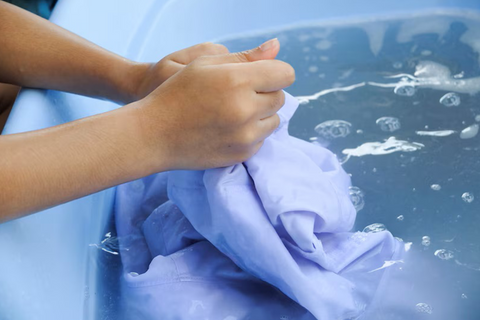Mastering the Art of Softening T-Shirts: A DIY Guide
Posted by ARTEMIO NERVEZ JR

Discovering the secret to transforming your t-shirts from rough and ready to soft and comfy can feel like stumbling upon a hidden treasure. Whether it's a brand-new tee that feels a bit stiff or an older one that could use a little tender love and care, softening up your shirts is an easy DIY project that can significantly enhance their wearability and comfort. Here's a comprehensive guide to mastering the art of softening t-shirts, ensuring your casual wear is as comfortable as it is stylish.
Essential Tools and Materials
Before you start, make sure you have these items on hand:
- Your T-Shirt: Any t-shirt you wish to soften, whether it's made from cotton, a cotton blend, or even synthetic materials.
- Fabric Softener: The key ingredient for a traditional softening method.
- Baking Soda: A natural softening agent that also helps with cleaning.
- White Vinegar: An excellent natural fabric softener that also removes odors and residue.
- Salt: The granules can help to break down stiff fibers.
- A Washing Machine: For the soaking and washing process.
- A Dryer or Clothesline: Depending on your preferred drying method.
Step-by-Step Softening Process
- Pre-Wash Treatment: Begin by creating a soaking solution in your washing machine or a large basin. Mix 1 cup of white vinegar with enough water to submerge your shirt. Soak the shirt for at least one hour. The vinegar helps to break down the fibers, making them softer, without leaving any lingering smell after washing.
- Washing with Baking Soda: After soaking, do not rinse the shirt. Instead, run a regular wash cycle, adding half a cup of baking soda to the load instead of laundry detergent. Baking soda not only cleans your shirt but further aids in softening the fabric.
- Rinsing with Fabric Softener: If you're using a washing machine, add fabric softener during the rinse cycle according to the manufacturer's instructions. For a more natural approach, you can skip the commercial fabric softener and instead add a cup of white vinegar to the rinse cycle. It's a natural fabric softener that won't harm your shirt.
- Drying Techniques: For the softest finish, tumble dry your shirt on a low or no-heat setting with a couple of clean tennis balls or dryer balls. The balls will pummel the fabric, breaking it down and resulting in a softer texture. If you prefer to air dry, hang your shirt outside on a breezy day but avoid direct sunlight to prevent the fabric from stiffening up.

Tips for Ongoing Softness
- Repeat the Process: If your shirt isn't as soft as you'd like after the first go, don't hesitate to repeat the process. Some fibers are more stubborn than others and may need a little extra persuasion.
- Regular Maintenance: Incorporate vinegar or baking soda into your regular laundry routine to maintain the softness of all your clothes.
- Avoid High Heat: High temperatures can cause fibers to tighten up and fabrics to become stiff. Always wash and dry your clothes in the lowest heat settings.
Wrapping Up
Softening your t-shirts at home is an easy and cost-effective way to ensure your wardrobe remains comfortable and enjoyable to wear. By following these simple steps and using products you likely already have in your home, you can breathe new life into old shirts or ensure new ones are cozy from the start.
At VS Tees, making your t-shirts supremely soft and inviting is both straightforward and economical, guaranteeing your collection stays delightful to do. With this easy-to-follow guide and the aid of common household items, you're equipped to rejuvenate well-loved tees or guarantee that new additions feel snug right away. Welcome to the world of soft, comfortable t-shirts that you'll never want to take off!





